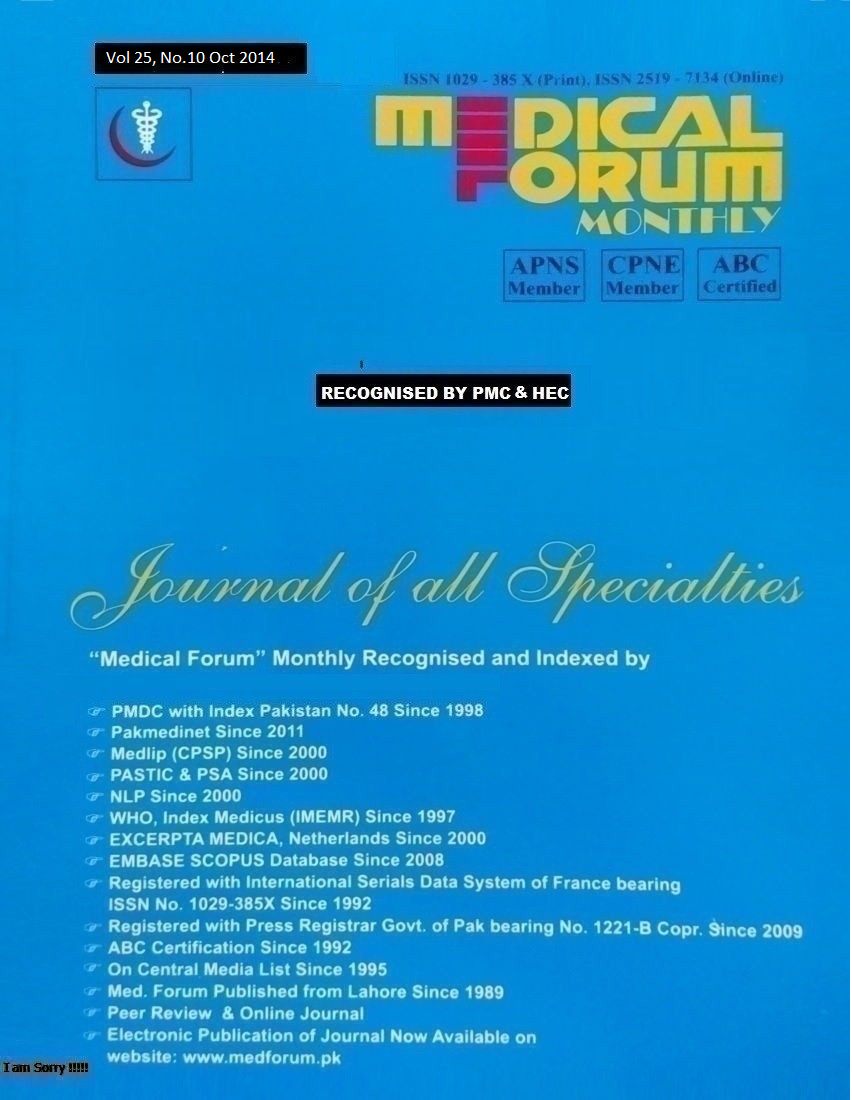
10. Treatment Outcome in Childhood Steroid Resistant Nephrotic Syndrome with Different Therapeutic Regimens
1. Muhammad Imran 2. Zulfiqar Ali 3.Waqas Imran Khan 4. Hashim Raza
1. Asstt. Prof. of Paediatric Nephrology, 2. Asstt. Prof. of Paediatric Oncology, 3. Asstt. Prof. of Paediatric
Endocrinology, 4. Medical Officer, Paediatrics; The Children's Hospital & the Institute of Child Health, Multan
ABSTRACT
Objective: To determine the efficacy of different treatment strategies in children with steroid resistant nephrotic syndrome (SRNS) and to find the impact of histopathological lesions on the treatment outcome. Study Design: Retrospective observational
Place and Duration of Study: This study was conducted at Paediatric Nephrology Department, the Children's Hospital and the Institute of Child Health, Multan from January, 2006 to July, 2014.
Materials and methods: Medical record of 77 patients with SRNS was reviewed. For the purpose of treatment patients were divided into two groups depending upon the initial renal function tests (RFTs). Group 1 included patients with normal RFTs. They received cyclosporine A (CsA), mycophenolate mofetil (MMF), combined CsA and MMF, and intravenous methylprednisolone (MP) pulses as step 1, 2, 3, and 4 respectively. Group 2 included patients with deranged RFTs and they were given either MMF, or MP pulses. Long-term follow up was done ranging from 1-5 years. Treatment outcome with different therapeutic regimens was determined. The role of histopathology in predicting final outcome was also evaluated.
Results: In group 1, 44/61(72%) patients achieved complete remission with successive treatment steps1-4.Two (3.4%) patients were partial responders whilst 15(24.6%) patients failed to respond to all treatment regimens. Out of the 16 patients in group 2, only 02 (12.5%) achieved remission. Patients with focal segmental glomerulosclerosis (FSGS) were least likely to respond to treatment (12/28;42.8%),followed by mesangioproliferative glomerulonephritis (MesPGN)(15/23;65.2%), and minimal change disease (MCD)(14/18;77.8%).
Conclusion: SRNS patients with normal initial RFTs are much more likely to respond to immunosuppressives than those with deranged RFTs at presentation. FSGS is more difficult lesion to treat compared with non-FSGS lesions.
Key Words: Steroid resistant nephrotic syndrome, children, renal function tests, histopathological lesions
